by bassybeats | Jan 15, 2023 | Computing
The Trademe find that started it all
This is what started this project, a $38 trademe buy for an AdvanTech 486 on a Card. Listed as Untested with a 486DX2 and 8MB of ram, how could I go wrong. I had a DOS machine already but I liked the idea of an ultra compact but real hardware DOS machine. The idea was to get the smallest backplane I could find and put a Gotek and CF Card in it with a Pico Power Supply. I opted for a 6 spot ISA backplane from AliExpress with a real ATX power Connector.
What am I going to put this in?
I had the left over motherboard tray from my test bench build that would be perfect for this, all I had to do was chop it up. I paired this up with some Rimu wood leftovers I had sitting around and ordered some switches, a gotek and a the CF Adapter. I later had to order a few Molex and Sata Power splitters to get everything powered up off the Pico Power Supply as it didn’t have many outputs. But I got it all going, the only tricky part was lining all the switches up and cutting the hole for the floppy drive so it was straight.
How it turned out and future updates
Painted it black and stained the wood and it turned out really well. I put in a Vibra16 and a totally overkill 64mb single ram stick along with my ultimate DOS image.
In the future I would like to add or try a PC104 sound card as well as intergrating an MT32PI inside it as well as adding a couple of small fans to the rear panel with a 3D printed bracket.
by bassybeats | Jan 15, 2023 | Computing, Retro Gaming
Finding the Right MT32Pi Hat
Since nobody can afford a real Roland MT32 a bunch of smart people had figured out how to use a Raspberry Pi to emulate it as a hardware device, which was much more in my price range. I did some digging and found that most Pi hats were for the MiSTer but i did come across this one from Chris-JH on Github. I got some boards made on JLCPCB and waited for them to arrive.
Building up the PCB, with issues
Building it out was really easy if you just follow the guides on the GitHub pages above. I did have to make a Midi to GamePort cable to hook it up to my old 486 machine for testing. For the first test I was getting no sound of out the thing. This was when I tested it on another Pi and realised I had an issue with a couple of the GPIO pins on my 3B+, swapped it out to a PiZero 2 and it was perfectly fine.
Adding every single Sound Font I could find
The Github page has a few Soundfont libraries that you can use, but me as usual had to have all of them I could find. Rummaging across the internet I managed to scape together a collection of 260 SoundFonts totally 31GB! Totally unnecessary but what I wanted.
How it ended up and next steps
It all turned out pretty good and works as advertised, the only thing I am going to do I design a proper all in one case for this HAT for either a PiZero 2 or a 3B+.
by bassybeats | Jan 15, 2023 | Computing
Laying out the parts
I have a really old test bench that came with a motherboard I bought years ago but I wanted to some more modular and more sturdy that could work for both modern and vintage setups. It wasn’t until I came across this video from Tech Tangents that I finally figured out what I wanted to do.
Putting it all together
I found a local place that was selling up some offcuts of 2020 Aluminium extrusions for cheap and ordered some fittings on AliExpress to match. Once I had these I laid out all the things I could want to have. It needed:
- AT and ATX support
- expansion card holder bit
- IDE and SATA DVD drives
- IDE and SATA HDD’s
- Windows 10, Windows XP, Windows 98, Linux and DOS installs
- Floppy or Gotek
- An physical Power button
I chopped up the old test bench and stole a couple of mounts and parts from it ( the rest will go into another project ) and bolted it all together which was suprisingly easy. The only part I had to 3D print was the T-Slot to Motherboard Standoff adapters that would slide around to suit any motherboard type. I opted for a modern ATX power Supply with dual 8pin GPU plugs and an AT adapter for older motherboards.
Current State
I think the final / current state of the test rig ended up pretty well, there will be adjustments for sure in the future. I would like to swap all the drives over to SSD and Make a better screwed in expansion slot bar and the current one is using bull clips to keep the cards in place.
by bassybeats | Jan 15, 2023 | Computing, Retro Gaming
Digging the Apple IIc and Laser 128 out of the hoard
These were an extremely grubby set of machines that came out of an estate sale. They seemed to be sitting for a very long time with a pile of classic macs. BUT, I had been looking for a Laser 128 for a while as I had seen a few Youtube Videos of people using them and I really wanted an Apple II compatible thing to learn about how they worked and enjoy a few games on one. I ended up with both a Laser 128 and Apple IIc with accompanying monitors, bit more than I was after but I wasn’t going to turn it down.
Cleaning the years of grime off
The first step was to get these things cleaned up, they were disgusting after all those years in that hoarders house. Most of the grime came off with some GooGone and Elbow grease. The Apple IIc was missing some keys and some of the Alps keys were not functioning. I managed to pull them out and get some deoxit into them and they came right. After a few months I tracked down some replacement keycaps on eBay and it started to look amazing.
Power Supply and Floppy Fixes
When I got them, it only have a single power supply, a 110V one. So I could at least test the machines with my variac but I would have to make up a power supply. Turns out all you need is a 7 pin din connector and a 15V laptop power supply. Wiring was fairly straight forward.
As for the floppy drives, All I needed to do was clean them out and clean the heads and they started working.
Getting the SDisk II working and making some disks with ADTPro
The first port of call was to make up some disks for these things, but since I didn’t have anything to make disks, I opted to fire up ADTPro on my PC and wire up the Serial Cable to transfer some disc images over. I ended up with a handful of tools and game disks.
I picked up a SDisk II from a mate that was apparently not working but after reflashing the firmware on the Atmega chip it seemed to fire up no worries and loaded some games off the SD card. I had to convert over the disc images to .NO files for it to work though.
by bassybeats | Jan 15, 2023 | Retro Gaming
The Pickup
Well I thought it was the deal of a century, a 21″ Sony G21S1 CRT for a whole $1! I had heard these were RGB moddable and just couldnt resist having a go myself. Upon pickup it was obvious that this thing was hardly ever used and just had sat in a basement for years. I reached out to my mate Matt and asked for the run down of how he modded his and got the full photo breakdown which was encouraging.
The guts of the TV
A quick look inside and it was very dusty but also very empty, all that needed to happen was the dust be blown out and a screw post be JB Welded back on.
Adding in the RGB Mod
Now for the hard bit, essentially you can mod these by tapping into the OSD that is used for Teletext and the one screen menus etc and inject and nice clean RGB signal into it. For this model, you can tap in at the empty socket for CN104 which has R, G, B, the blanking Pin and Ground. R,G,B and ground is obvious, the blanking pin is the part that you need to concern yourself with. You need to tell the TV to turn on the OSD which takes ~3V. Even though I thought it would be 0Volts LOW and 5V HIGH it seemed to have an limit where to turn the OSD on it needed to be ~3Volts, something Matt had told me about. To do this, I just grabbed 5V from a nearby spot and used a regulator and trimpot to pull it down to where I needed it to be. You also need connect up the composite pin from the SCART plug to the onboard Composite plug to inject the CSYNC or else the machine won’t have sync.
The Final Outcome
Once all the wiring was complete I drilled and dremelled out the SCART port and added some labels and switches to enable/disable the SCART/OSD mod. It looked remarkably clear after this mod and you could see all though glorious scanlines.
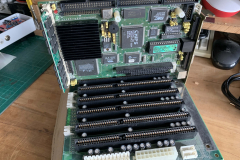
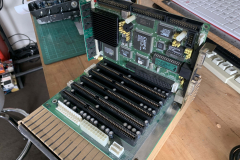
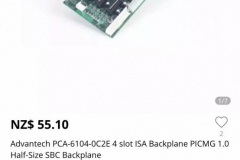
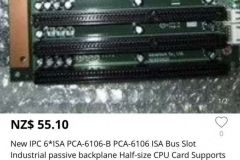
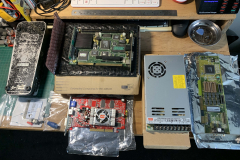
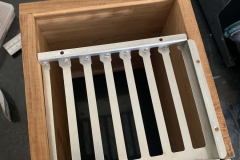
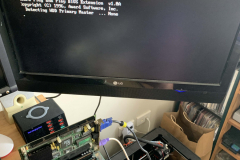
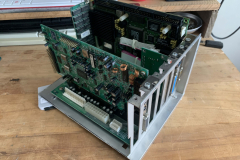
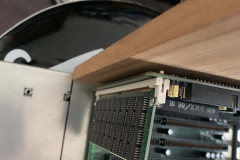
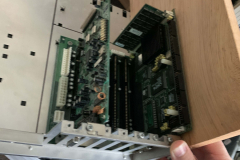
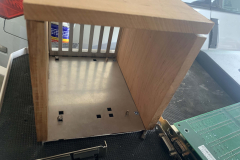
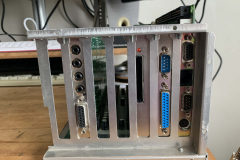
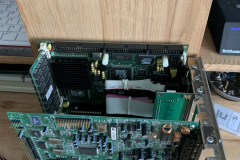
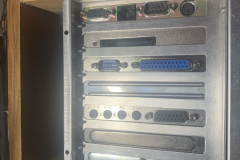
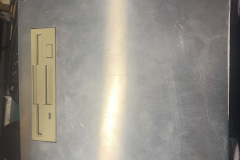
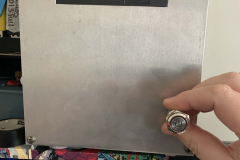
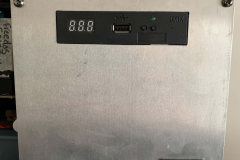
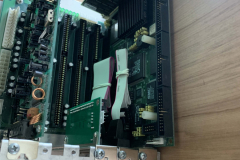
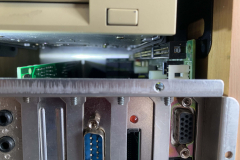
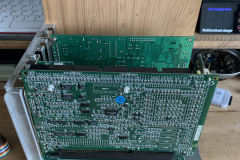
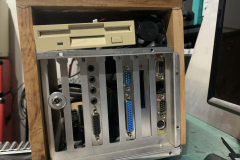
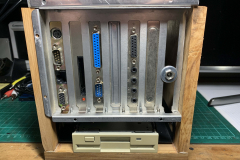
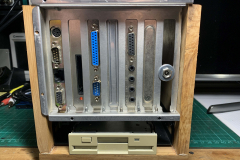
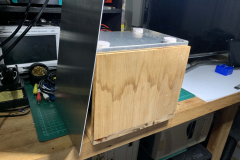
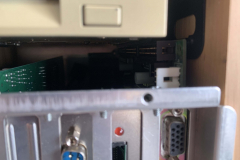
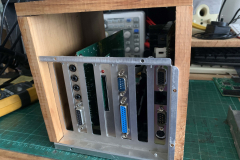
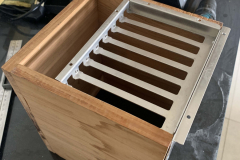
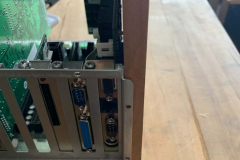
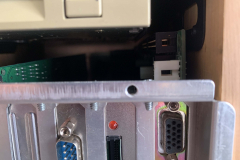
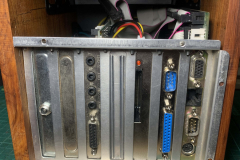
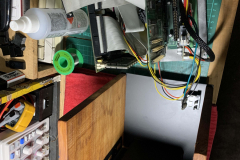
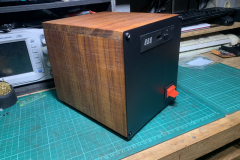
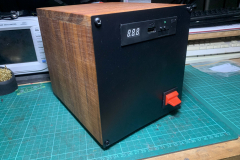
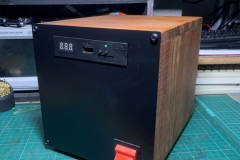
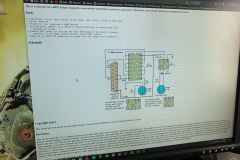
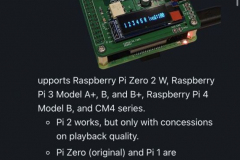
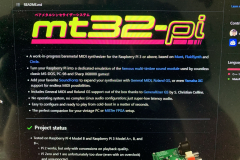
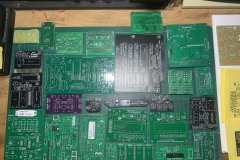
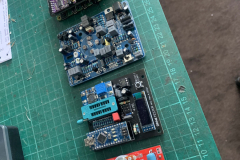
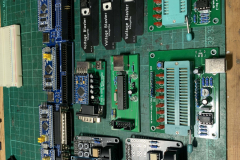

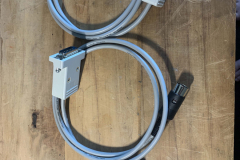
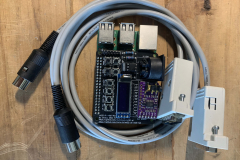
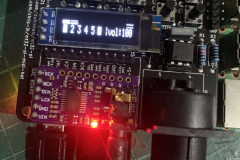
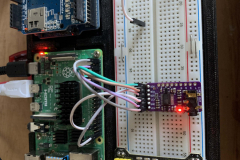
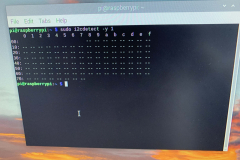
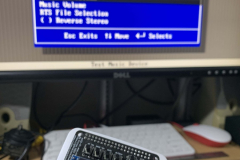
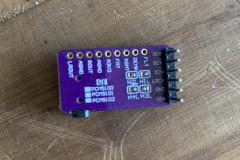
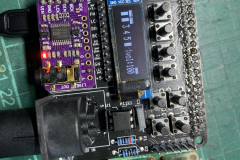
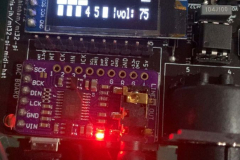
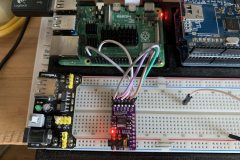
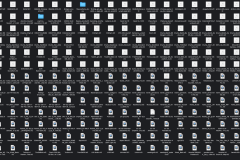
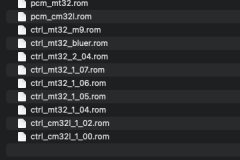
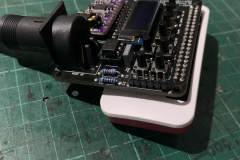

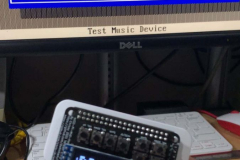
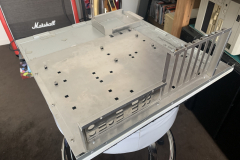
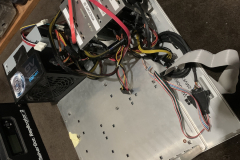
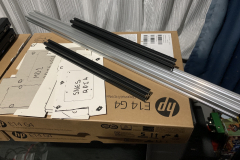
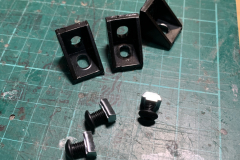

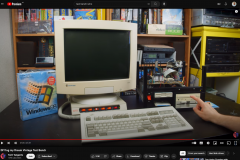
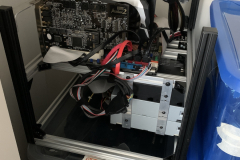
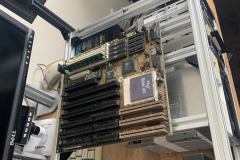
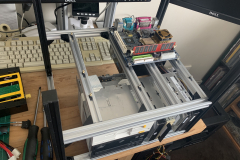
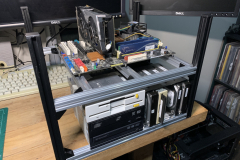
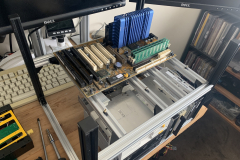
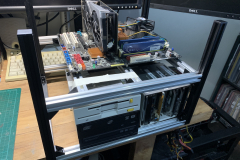
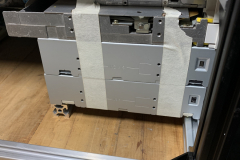
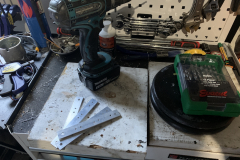
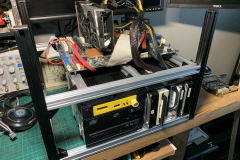
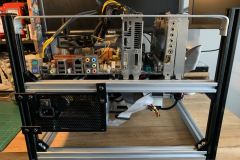
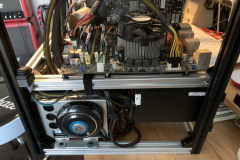
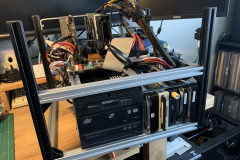
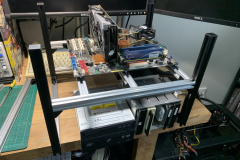
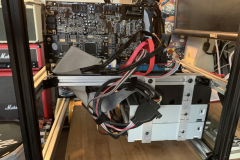
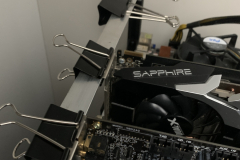
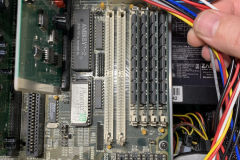
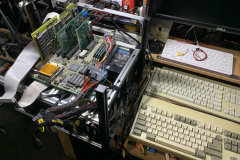
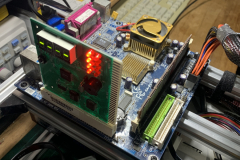
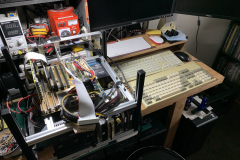
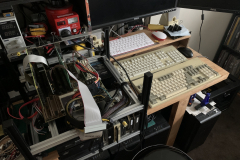
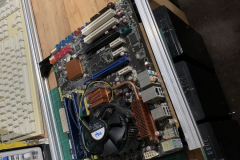
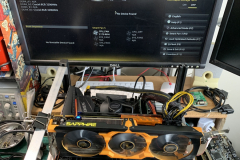
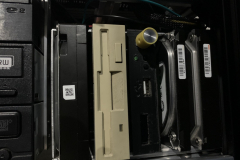
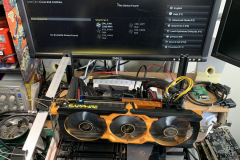

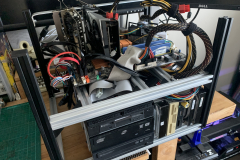
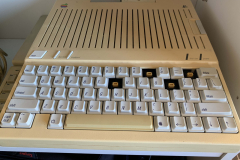
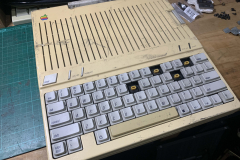
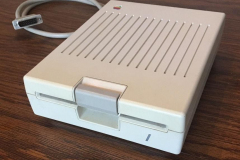
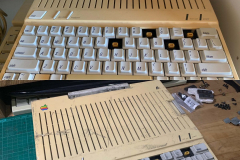
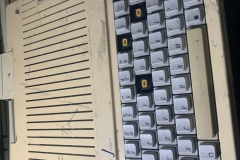
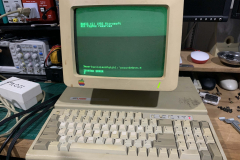
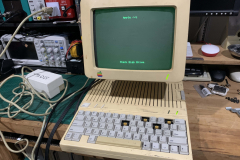
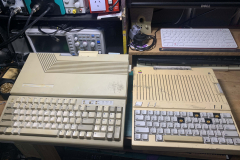
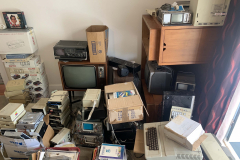
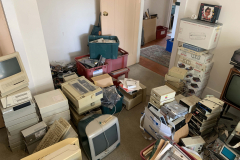
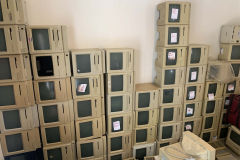
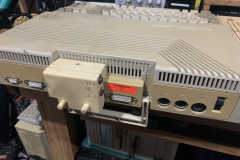
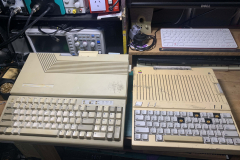
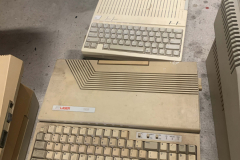
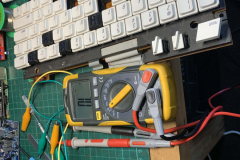
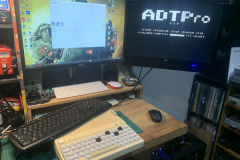
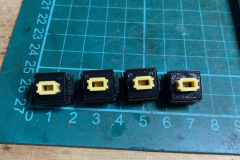
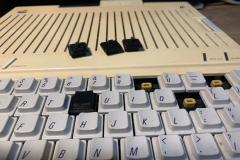
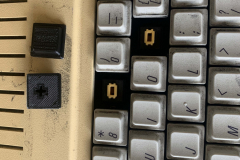
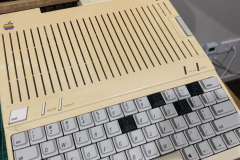
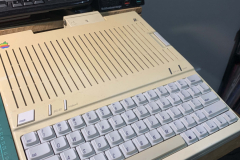
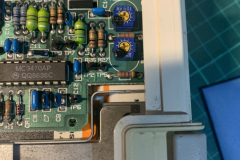
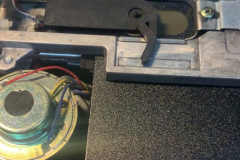
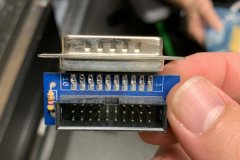
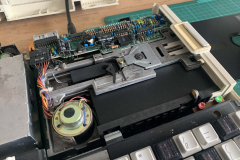
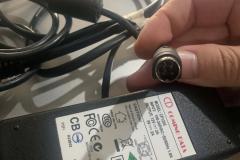
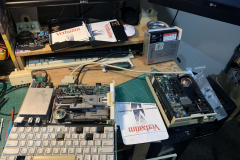
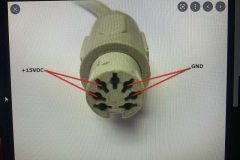
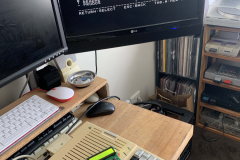
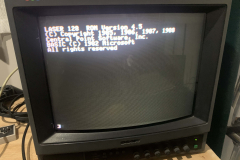
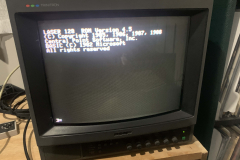
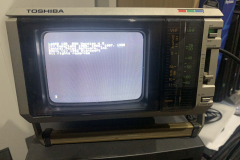
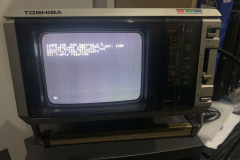
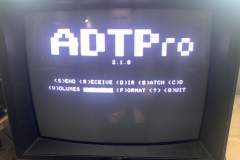
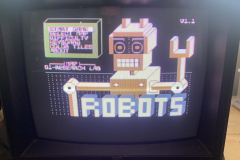
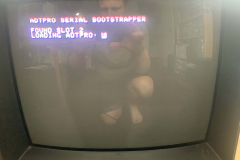
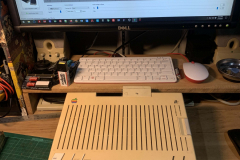
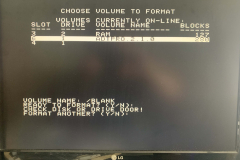
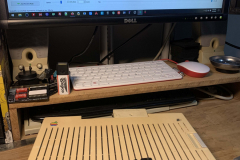
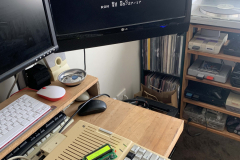
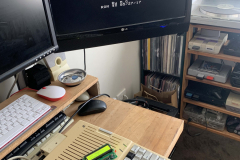
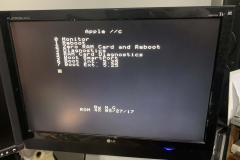
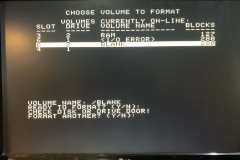
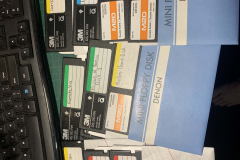
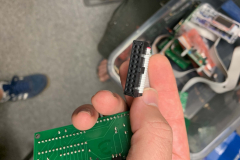
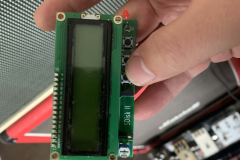
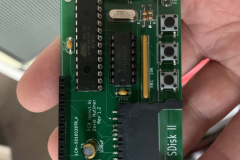
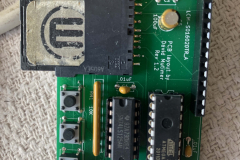
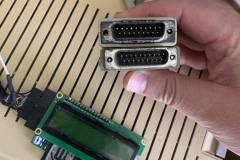
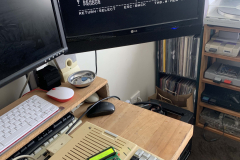
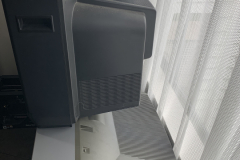
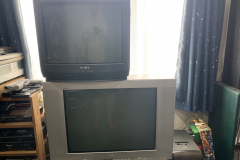
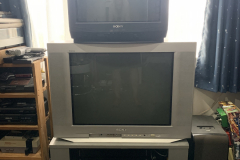

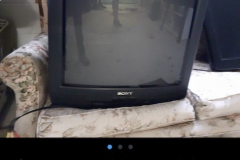
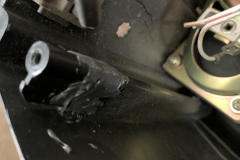
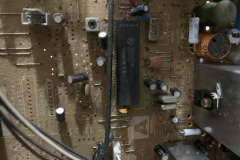
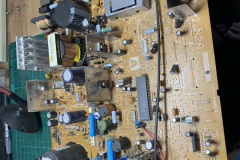
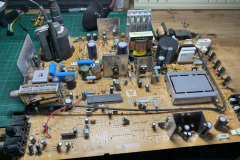
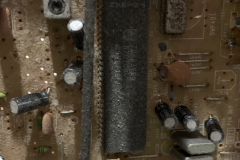
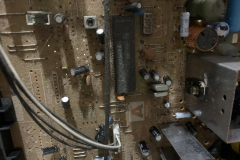
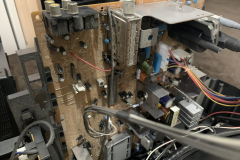
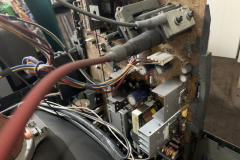
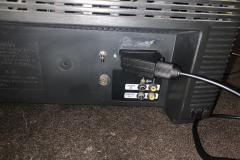
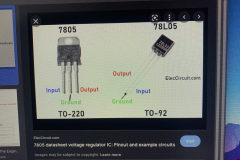
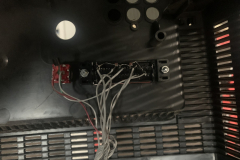
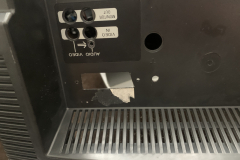
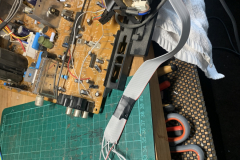
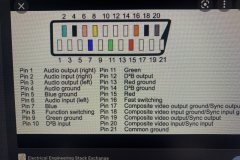
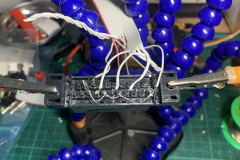
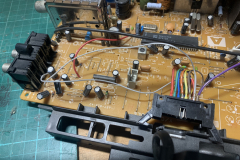
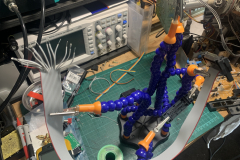
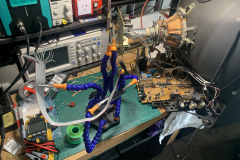
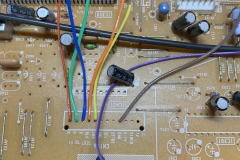
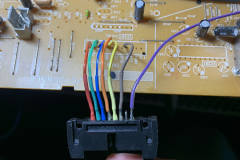
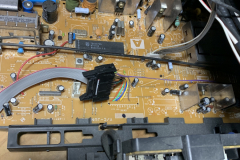
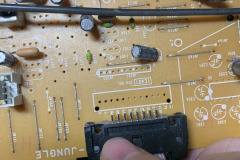



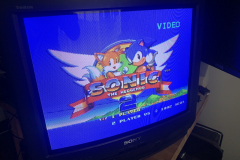
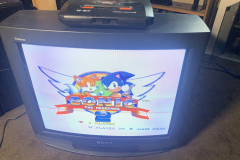
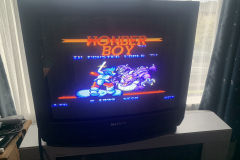
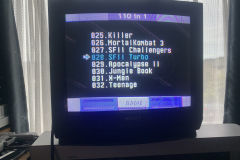
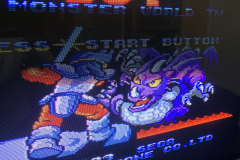
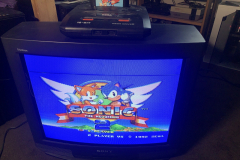
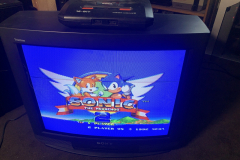
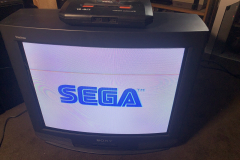
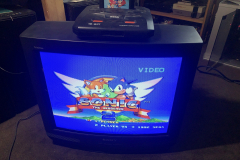
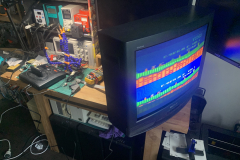
Recent Comments